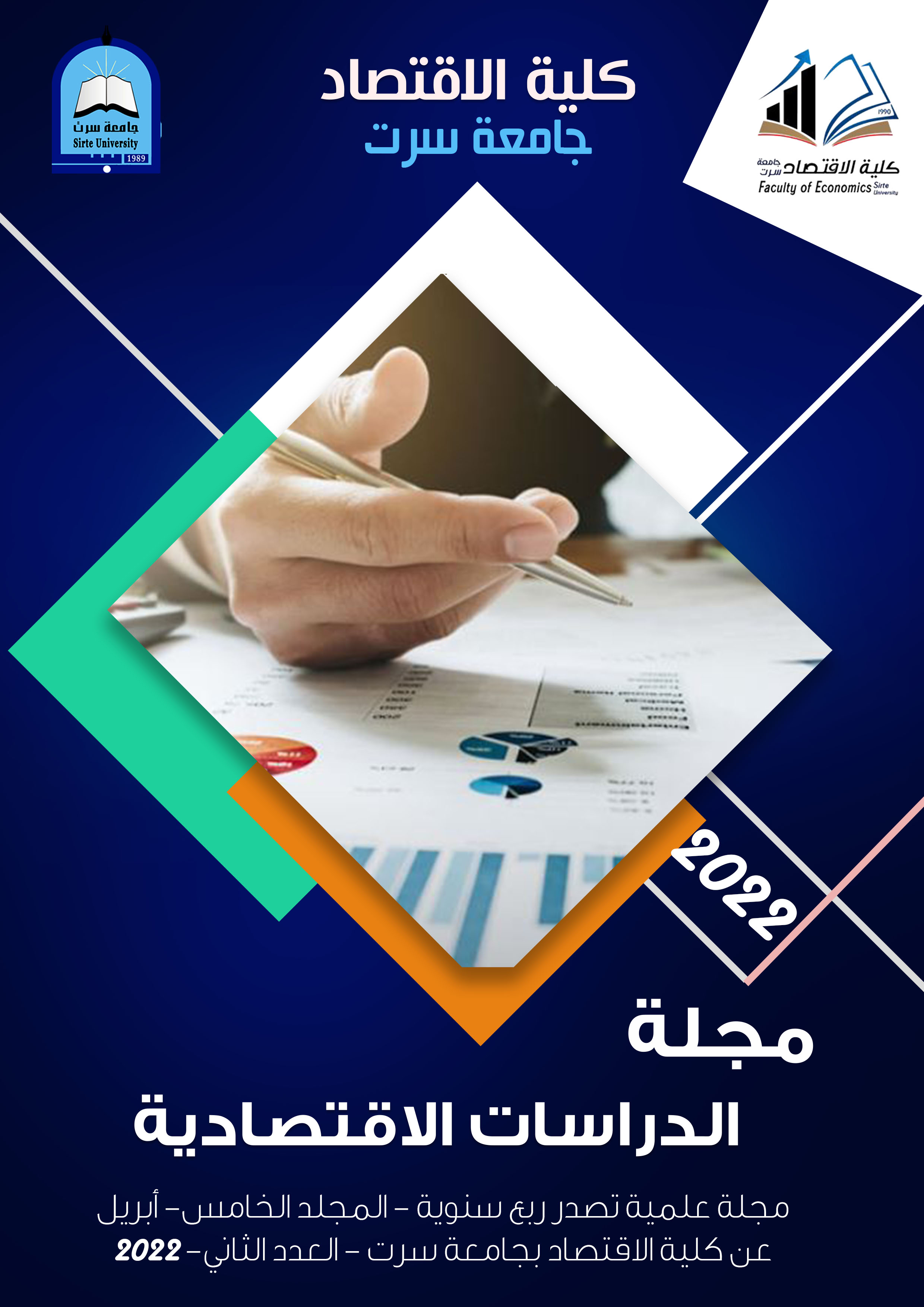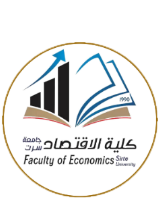الانفتاح التجاري والنمو الاقتصادي في الاقتصادات الريعية دليل تجريبي من ليبيا
DOI:
https://doi.org/10.37375/esj.v5i2.159الكلمات المفتاحية:
الانفتاح التجاري، النمو الاقتصادي، البنية الريعية، الاقتصاد الليبي، السببيةالملخص
هدف هذا البحث لقياس أثر الانفتاح التجاري على النمو الاقتصادي في الاقتصاد الليبي، مع التركيز على البنية الريعية لهذا الاقتصاد وتأثيرها في طبيعة العلاقة بين هذين المتغيرين، وفي سبيل تحقيق هذا الهدف استخدم البحث عدة أساليب قياسية تمثلت في تحليل الارتباط، ونموذج الانحدار الذاتي لفترات الإبطاء الموزعة المطور، واختبارات العلاقة السببية في المدى القصير والمدى الطويل، وقد توصل البحث من خلال تقدير معلمات الأثر واختبارات السببية في الأجل الطويل إلى أن الانفتاح التجاري يؤثر إيجابياً على النمو الاقتصادي في ليبيا، وأن العلاقة الايجابية بين الانفتاح التجاري والنمو الاقتصادي تتأثر إيجابياً بعامل وفرة الموارد الطبيعية، وتتأثر سلبياً بعامل الإعتماد عليها
المراجع
• المجلس الوطني للتطوير الاقتصادي. (2020). قاعدة البيانات الاحصائية. طرابلس.
• الهيأة العامة للمعلومات (2007)، قطاع الإحصاء والتعداد، السلسلة الزمنية لاحصاءات التجارة الخارجية خلال السنوات 1954-2003.
• الهيأة العامة للمعلومات. قطاع الاحصاء والتعداد. ملخص احصاءات التجارة الخارجية، 2005.، 2006، 2008، 2010، 2012، 2014، 2017.
• الهيأة الوطنية للبحث العلمي. مركز بحوث العلوم الاقتصادية. البيانات الاقتصادية والاجتماعية في ليبيا عن الفترة 1962-2006. بنغازي. ليبيا، 2010.
• الهيأة الوطنية للبحث العلمي. مركز بحوث العلوم الاقتصادية. قاعدة البيانات الاحصائية. بنغازي. ليبيا. http://erc.ly
• مجلس التخطيط العام، إدارة الخطط والبرامج، المؤشرات الاقتصادية والاجتماعية 1962-2000. طرابلس/ليبيا.
• مصرف ليبيا المركزي. النشرة الاقتصادية. المجلد 51-الربع الرابع. 2014.
• مصرف ليبيا المركزي. النشرة الاقتصادية. المجلد 57-الربع الرابع. 2017.
• وزارة التخطيط. (2014). الإدارة العامة للحسابات القومية. نشرة الحسابات القومية 2007-2012.
• وزارة التخطيط. (2019). الإدارة العامة للحسابات القومية. قاعدة البيانات الاحصائية 2012-2017.
• وزارة التخطيط. المؤشرات الاقتصادية والاجتماعية 2000-2012.
• Ampofo, G. K. M., Cheng, J., Asante, D. A., & Bosah, P. (2020). Total natural resource rents, trade openness and economic growth in the top mineral-rich countries: New evidence from nonlinear and asymmetric analysis. Resources Policy, 68, 101710.
• Badeeb, R. A., Szulczyk, K. R., & Lean, H. H. (2021). Asymmetries in the effect of oil rent shocks on economic growth: A sectoral analysis from the perspective of the oil curse. Resources Policy, 74, 102326.
• Cavalcanti, T. V. D. V., Mohaddes, K., & Raissi, M. (2011). Growth, development and natural resources: New evidence using a heterogeneous panel analysis. The Quarterly Review of Economics and Finance, 51(4), 305-318.
• Edwards, S. (1993). Openness, trade liberalization, and growth in developing countries. Journal of economic Literature, 31(3), 1358-1393.
• Gylfason, T., & Zoega,. (2006). Natural resources and economic growth: The role of investment. World Economy, 29(8), 1091-1115.
• Hamdi, H., & Sbia, R. (2013). The relationship between natural resources rents, trade openness and economic growth in Algeria. Economics Bulletin, 33(2), 1649-1659.
• Idris, J., Yusop, Z., & Habibullah, M. S. (2016). Trade openness and economic growth: a causality test in panel perspective. International Journal of Business and Society, 17(2), 281.
• IMF, International Monetary Fund, The commodity terms of trade database, http://data.imf.org
• Kacou, K. Y. T., Kassouri, Y., Evrard, T. H., & Altunta, M. (2021). Trade openness, export structure, and labor productivity in developing countries: Evidence from Panel VAR approach. Structural Change and Economic Dynamics. doi: https://doi.org/10.1016/j.strueco.2021.11.015.
• Kumar Narayan, P., & Smyth, R. (2006). Higher education, real income and real investment in China: evidence from Granger causality tests. Education Economics, 14(1), 107-125.
• Majumder, M. K., Raghavan, M., & Vespignani, J. (2020). Oil curse, economic growth and trade openness. Energy Economics, 91, 104896.
• Mankiw, N. G., Romer, D., & Weil, D. N. (1992). A contribution to the empirics of economic growth. The quarterly journal of economics, 107(2), 407-437.
• Mohamed , Nashwa Mostafa Ali. (2018). The Development role of GCC Foreign Trade under Resources Curse, Openness and Institutional Quality. Arab economic and business journal. 13, 209-2019.
• Odhiambo, N. M. (2008). Financial depth, savings and economic growth in Kenya: A dynamic causal linkage. Economic Modelling, 25(4), 704-713.
• Odhiambo, N. M. (2009). Energy consumption and economic growth nexus in Tanzania: An ARDL bounds testing approach. Energy Policy, 37(2), 617-622.
• Olayungbo, D. O. (2019). Effects of oil export revenue on economic growth in Nigeria: A time varying analysis of resource curse. Resources Policy, 64, 101469.
• Papyrakis, E., & Gerlagh, R. (2004). The resource curse hypothesis and its transmission channels. Journal of Comparative Economics, 32(1), 181-193.
• Pesaran, M. H., & Shin, Y. (1998). An autoregressive distributed-lag modelling approach to cointegration analysis. Econometric Society Monographs, 31, 371-413.
• Pesaran, M. H., Shin, Y., & Smith, R. J. (2001). Bounds testing approaches to the analysis of level relationships. Journal of applied econometrics, 16(3), 289-326.
• Sam, C. Y., McNown, R., & Goh, S. K. (2019). An augmented autoregressive distributed lag bounds test for cointegration. Economic Modelling, 80, 130-141.
• Shrestha, S., Kotani, K., & Kakinaka, M. (2021). The relationship between trade openness and government resource revenue in resource-dependent countries. Resources Policy, 74, 102332.
• Solow, R. M. (1956). A contribution to the theory of economic growth. The quarterly journal of economics, 70(1), 65-94.
• Toda, H. Y., & Yamamoto, T. (1995). Statistical inference in vector autoregressions with possibly integrated processes. Journal of econometrics, 66(1-2), 225-250.
• UN, United Nations, Statistical Database, http://data.un.org.
• WB, World Bank Database: https://data.worldbank.org/
• Yaduma, N. (2018). Investigating the oil curse in OECD and Non-OECD oil-exporting economies using green measures of income. Environment, development and sustainability, 20(6), 2725-2745.
• Yusuf, S., & Omar, M. R. (2019). Trade Openness and Economic Growth of Tanzania. Asian Journal of Economics, Business and Accounting, 12 (3) 1-10.




































